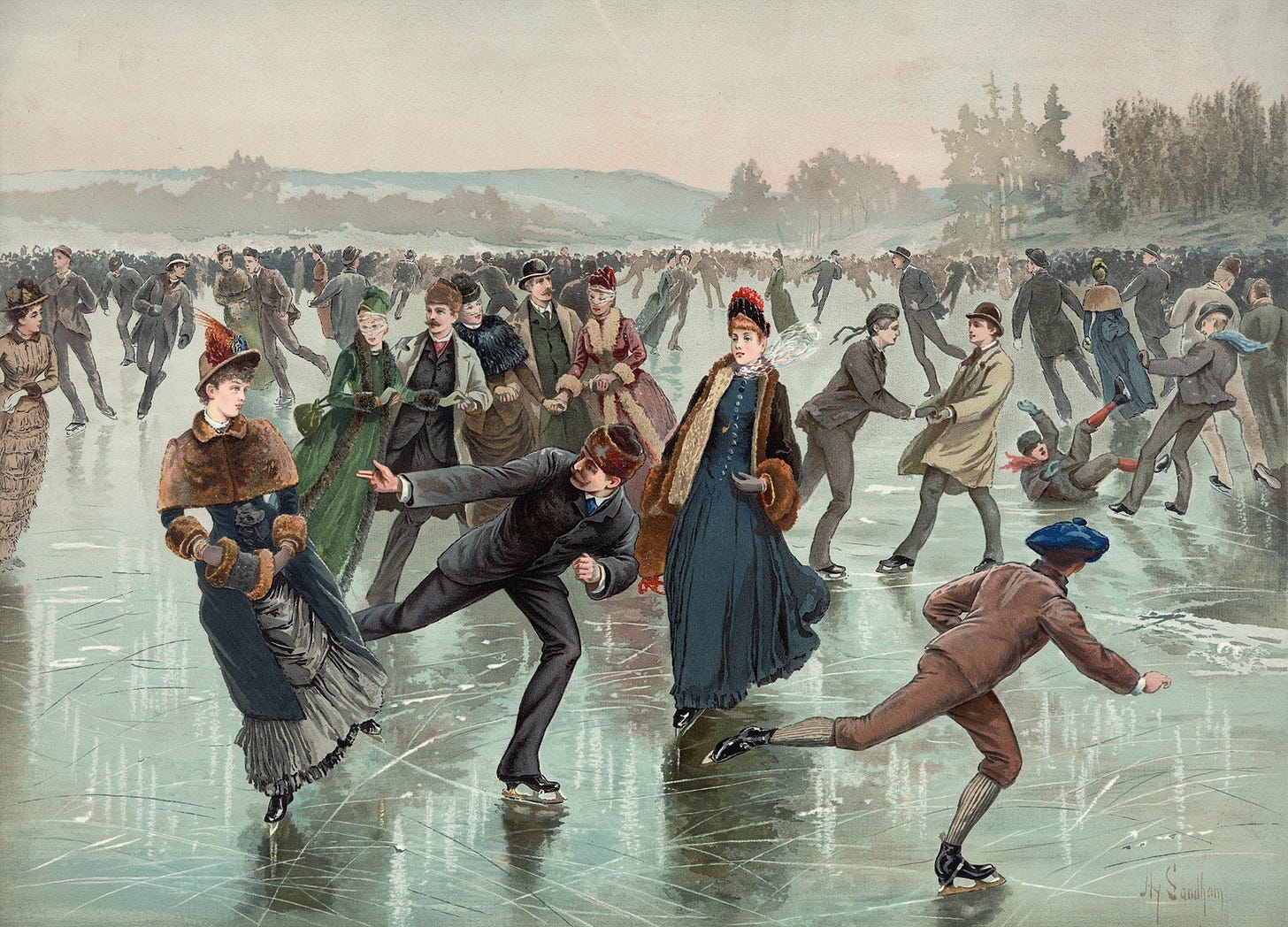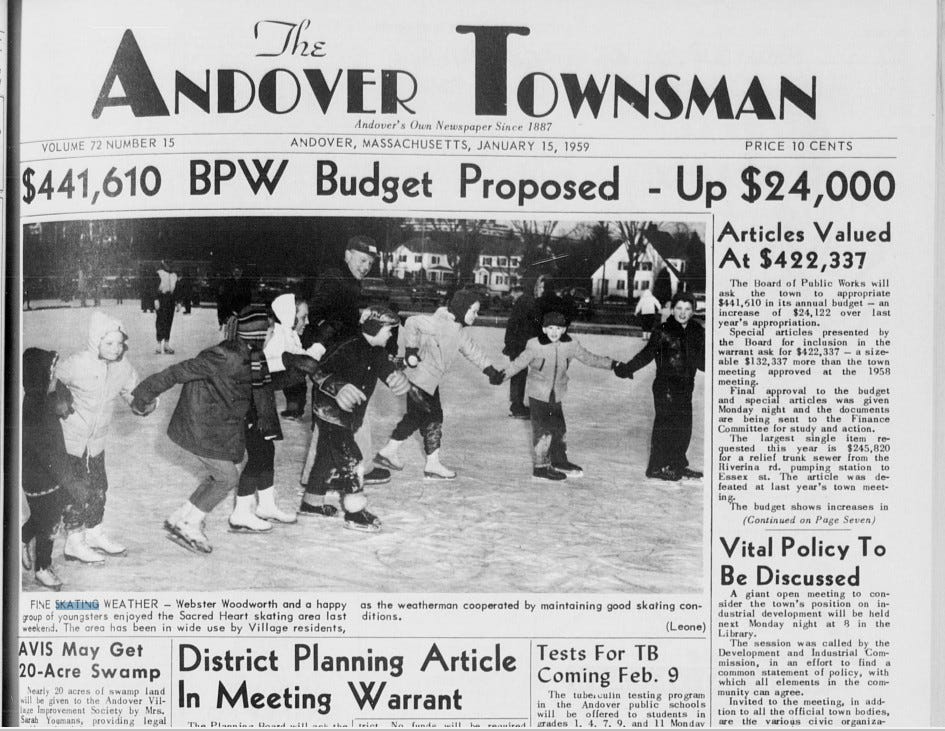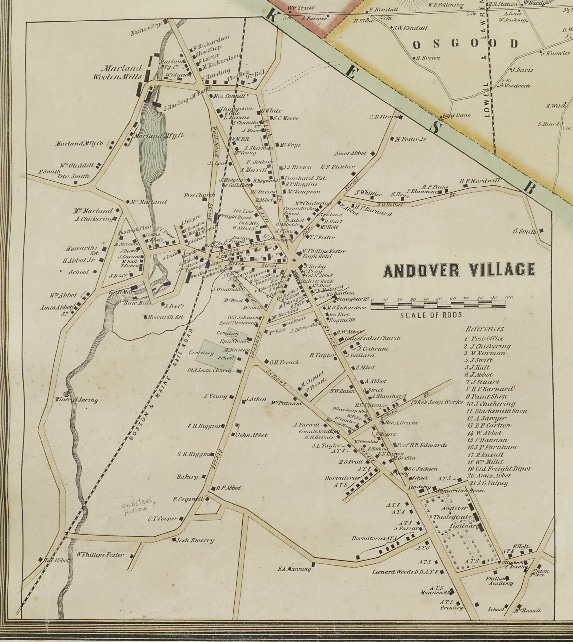Miscellany Mondays: "Went up to skate, had a nice time"
From rivers and ponds, to outdoor skate parks and indoor rinks, ice skating has been around for thousands of years. 19th century innovations increased the popularity and accessibility of ice skating.
Ice skating and outdoor activities, including sledding (also known as coasting and tobogganing) and sleigh riding, grew in popularity in the 19th century.
Part of the growth can be attributed to the rise in leisure time following industrialization. Mass production of ice skates also made the winter time pastime more affordable and accessible. Other recreational activities that flourished in the 1800s include warm weather sports bicycling and canoeing.
Early ice skates, dating back thousands of years, were made from polished animal bones. By the 1700s, ice skates had metal blades that were fastened to a wooden platform. The skate was strapped to the skater’s boot or shoe.1
The next major innovation in skate design came in 1850 when inventor Edward Bushnell from Philadelphia created steel bladed skates. Full boots attached to the blades came later.2
Where to skate
In Andover, and elsewhere, ponds, lakes, and rivers were popular places for skating.
In the History Center’s collection is a diary kept by local Andover girl Abby Locke in 1866 and 1867, when she was 15-years old. Abby provides a snapshot of life in town after the end of the Civil War, from a young person’s perspective. In addition to general observations about life in town, Abby wrote a lot about clothes, parties, dancing, and boys.
Abby mentioned skating several times in her 1866 and 1867 winter diary entries, but she didn’t give a lot of detail. Just “went skating,” or “went up to skate, had a nice time.”
In her memoir (written much later in her life) Abby wrote,
“There was little in the way of sports; no gymnasium. In the winter Brother’s Field, then a low meadow, would be flooded by damming up a brook that flowed through it.”
Brother’s Field was about twenty-five marshy acres to the east of Andover’s Highland Road and south of Salem Street. It was drained and leveled in 1903 for the construction of Phillips Academy’s athletic fields.
The Andover Townsman also mentioned the Brother’s Field skating pond off Salem Street that Abby wrote about in her diary.
Mill ponds along the Shawsheen River were popular, but unsafe, skating locations.3 Warnings such as this one…..
were sometimes followed by sad reports, like this one.
Beware of over-exertion
As women and girls joined the fun, newspapers included the usual 19th century dire warnings about girls over-exerting themselves.
January 1866, the Andover Townsman reprinted this article from the Philadelphia Ledger:
Hints to Young Skaters – Nearly all young people of both sexes who can spare the time have taken to skating as a diversion. The passion for it prevails now as extensively in the winter and the rage for base ball does in all other seasons. It is a graceful and fascinating amusement, and when moderately indulged in, must be healthful and invigorating.
But it is rather too fascinating. When the young girl who has just learned to skate, or is yet learning, gets the gleaming steel blades under her feet, she rarely feels disposed to take them off until she is utterly tired out, or the shades of night overtake her on the ice. By giving way to this desire to continue skating long after proper and prudent enjoyment of the exercise has elapsed, a great deal of harm is done.
The article went on to warn about the dangers of too tight skates, of feet in contact with metal that has been in contact with ice, and “All the time, the body being in active motion, the circulation is quickened everywhere except in the feet and ankles.”
Anyone who has spent time on ice skates knows how cold your toes can get!
Indoor skating
Today, skaters – young and young at heart – are more likely to skate indoors at skating rinks.
The first artificial ice for indoor skating debuted in London in 1876. The artificial ice was made of hog lard and salt. It’s no surprise that “Artificial ice fell out of favor primarily because the ice substitute smelled bad.”4
Creating ice skating parks and rinks
In 1917, the Andover Town Warrant included an article to authorize $100 to create a skating area at the Playstead, behind what is now Doherty Middle School. Although the wisdom of creating the skating area was questioned by Selectman Cole, the motion passed.
In 1929, students from Abbott Academy used a skating pond off Central Street, until it was drained to become a trout-rearing pond. (Andover Townsman May 3, 1929)
In the 1940s to the 1960s, the brothers at Sacred Heart Academy (now the Balmoral condominiums) flooded the school’s athletic field to create a skating pond. The son of one Sacred Heart student student recalls his father talking about flooding the ice each morning in the winter as his job to offset tuition.
Today, some Andover residents recall skating on small ponds in the 1960s-1980s. In Andover, those included Berry Pond in Harold Parker State Forest, Haggett’s Pond, Baker’s Meadow, West Parish Cemetery Pond, Fosters Pond, Husseys Pond, and any number of smaller ponds around town.
What are your memories of ice skating?
I remember skating on what we called a ‘pond’ next to my best friend’s grandmother’s house about ¾ of a mile from my house. The ‘pond’ might have been just a drainage or retention pond, but it was skateable! We would shovel off the ice and then hope we had time to skate before the boys arrived and set up their hockey nets. I remember falling once when I had both my hands in my pockets – never do that – it can be hard on the teeth.
Do you have memories of skating outdoors? Was it on a pond or a flooded field? Did you risk skating on a river or stream? Let me know in the comments.
Thanks for reading!
~Elaine
Course Hero, Ice Skating
The Shawsheen River is a 26.7-mile-long (43.0 km) tributary of the Merrimack River in northeast Massachusetts. The name has had various spellings. According to Bailey's history of Andover, the spelling Shawshin was the most common in the old records, although Shawshine, Shashin, Shashine, Shashene, Shawshene, and later, Shawsheen, are found. The river runs generally northward through the towns of Bedford, Billerica, Wilmington, Tewksbury, Andover, and Lawrence, where it joins the Merrimack. Like its parent, the river has played an important role in the development of the area, including industrial development, with many mills built to take advantage of the river's power.
The Spicket River begins at the outlet of Island Pond in Derry, New Hampshire, and flows south into Salem, New Hampshire, passing through the Arlington Mill Reservoir. The river continues through Salem, encountering copious suburban development, and enters the city of Methuen, Massachusetts, where it drops nearly 100 feet (30 m) in elevation over a series of dams on its way to the Merrimack River in Lawrence.















I interviewed my Mum once and wrote down comments she would make from time to time. She grew up on Moraine St. and this is one story she told me.
"There use to be a small pond back in the woods behind our house. All the kids in the neighborhood skated there. After a snow we would go down and clear off the ice. Then the boys would come and take over the pond to play hockey. It made us very angry. I broke my ankle skating there. My leg was in a cast for weeks." Nell (Ferrier) Batchelder - We learned to skate on a small pond behind my grandparent's farm on Argilla Rd. Then we graduated to Baker's Meadow which was a straight shot through the woods.
Growing up in Maryland/metro DC, we'd skate on the B&O canal. You could skate miles, although you had to walk around the locks. At some of the lock station houses, there would be hot cider and chocolate available and fires to warm up at.